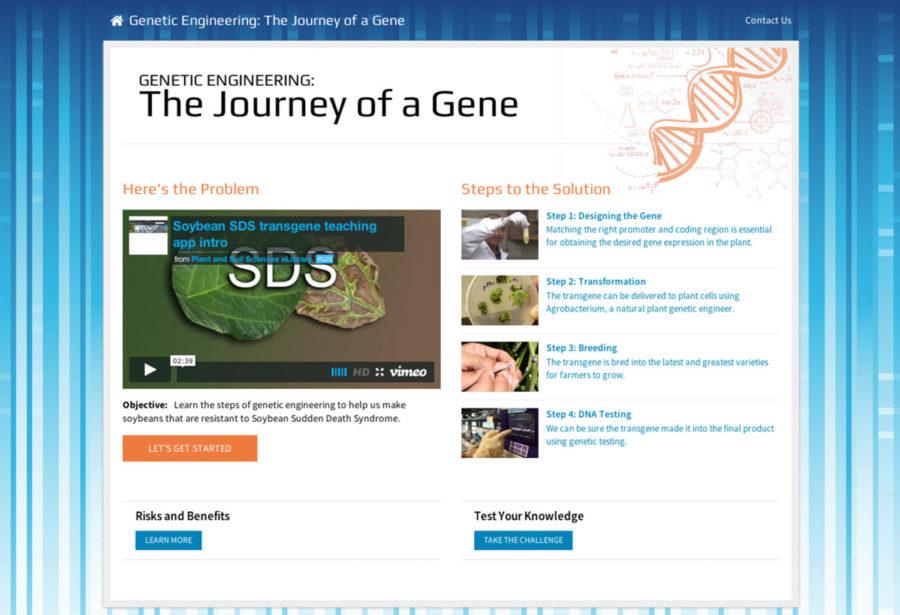ISU scientists create helpful soybean app with five-year grant
Courtesy of The Journey of a Gene
A new app, “The Journey of a Gene,” was created by a team of ISU scientists to be used for genetic transformation for sudden death syndrome in soybeans.
September 2, 2014
A new app, “The Journey of a Gene,” was created by a team of ISU scientists to educate students and teachers about genetically engineered foods.
The app is funded from a five-year grant awarded to Iowa State that began in the 2013 fiscal year. The grant from the U.S. Department of Agriculture was to be used for genetic transformation for sudden death syndrome in soybeans.
Sudden death syndrome, according to the grant document on the USDA’s website, is a major soybean disease that caused a $820 million loss in 2010.
Madan Bhattacharyya, professor of agronomy, and his colleagues were responsible for obtaining the grant and completing the research.
“Sixty-six percent of the grant goes to research,” Bhattacharyya said. “The other third is for the extension and education component.”
To create the app, part of the outreach component was given to Donald Lee, a University of Nebraska-Lincoln agronomy and horticulture professor, and Grace Troupe, his graduate student who worked as project manager for the app.
The highly visual app teaches basic information about genetically engineered food. It is split into four steps: designing the gene, transformation, breeding and DNA testing. A specific component of the app was also created for Future Farmers of America students and their competitions.
“The app is made to adapt to any device that you are using because we envisioned it being used on phones more often than computers, which is how a lot of our students learn,” Troupe said.
Students and teachers from around the globe will have the chance to use the app to learn about the transgenic approach to sudden death syndrome in soybeans. Transgenic deals with transferring a gene from one cell to another.
The public has sometimes expressed fear of transgenic methods with crops, but Bhattacharyya said he believes that gene transformation is just a different approach using a modern technology, but it is nothing to be feared.
“There are a lot of misconceptions about genetically engineered foods,” Troupe said. “I would like the upcoming consumer base to be really informed about what it is. Whether they choose to consume them or not, I’d like them to be able to understand the science behind it well enough to make a decision.”
Both Bhattacharyya and Troupe have contemplated a second generation of the app. Bhattacharyya mentioned that he had been receiving feedback about the app. One student from South America even emailed with further questions after using the app.
“Details are not always appropriate for everyone,” Bhattacharyya said. “Maybe in a second version, we can have some kind of additional information.”
Not only does the app provide a learning experience for its users but also to its creators.
“Since I only worked in the transformation side, this project helped me get a more holistic view of the entire process,” Troupe said. “This project gave me the chance to combine the science I love and the teaching I’m so passionate about in a way that could culminate my thesis project.”







